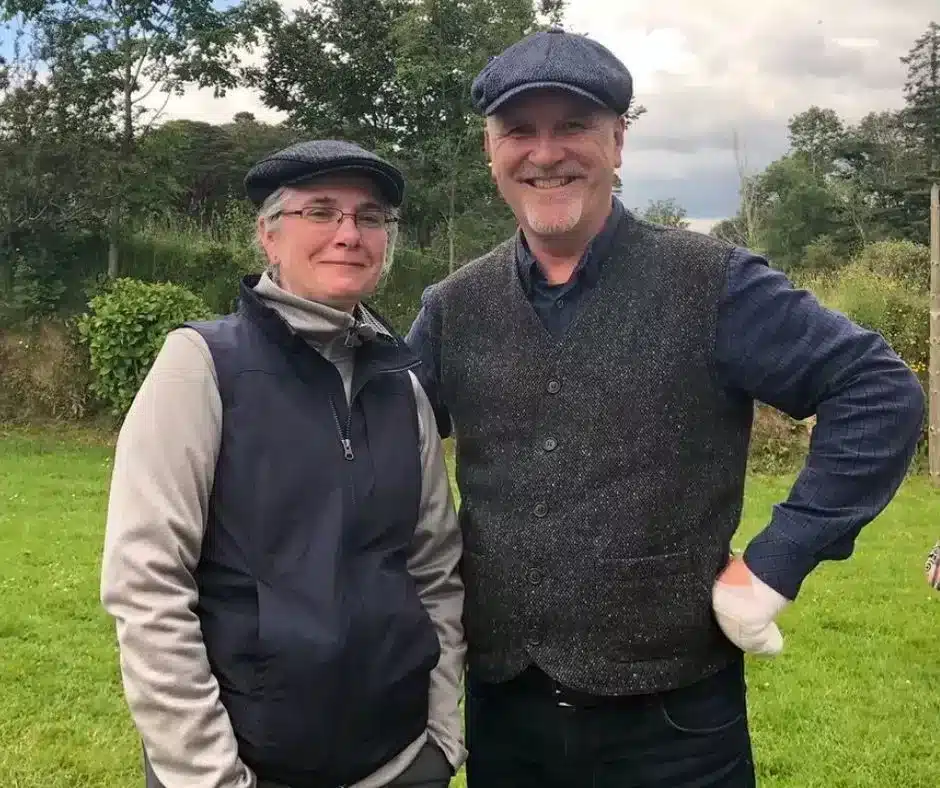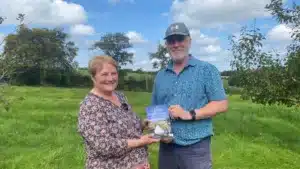Using the Irish Tithe Applotment Books
The Irish Tithe Applotment Books are a great way to gain a glimpse of farming tenants in various parts of Ireland in the early 1800s. Although useful, they are somewhat incomplete and in this letter we hope to get you interested in exploring more!

Have you ever looked at census records as part of researching your Irish ancestors? If you have, then you realise just how valuable they can be when locating your ancestral families at a particular location and time. In this letter, we chat about using a census but also one very particular resource that will give you a glimpse of Ireland in the early 1800s. Do read on and see what you think…
While the official purpose of a census is to monitor a country’s population, age profiles and population growth in particular parts of a country – there is, of course, another benefit. The household information provided in a census is particularly valuable for family history research.
However, there is one slight hitch when it comes to using a census for this purpose in Ireland. While the Irish census of 1901 and 1911 are mostly intact – offering a teasing glimpse into Irish households of over a hundred years ago – you will be disappointed when looking for any earlier census. You see, the census returns for 1821-1851 were almost totally destroyed in a fire in the Irish Public Record Office during the Civil War starting in 1922. As if that weren’t bad enough, the census returns for 1861 and 1871 were destroyed shortly after being gathered while those for 1881 and 1891 were pulped as a result of a First World War paper shortage.
What bad luck for all of us amateur Irish Family history researchers!
As a result, we have learned to rely on different “census substitutes” when searching for ancestral household information. In today’s letter, we look at one of those earliest “census substitutes” – a collection of records known as the “Tithe Applotments” which are available online to search for free.
The Tithe Applotment Books.
I asked our Green Room genealogist, Jayne McGarvey, to tell us a little more about the value of this set of records – over to you, Jayne:
“The Tithe Applotment records for the early nineteenth century in Ireland go some way towards replacing the mostly-destroyed 1831 and 1841 census records.
The “Tithe” mentioned in the title was a charge levied on agricultural land whose purpose was to fund the maintenance of the clergy of the Established Church of Ireland (even though most Irish tenant farmers at the time would have been Roman Catholic).
The first Irish Tithe Composition Act in 1823 led to the valuation of the townlands within each Irish Civil Parish. The Act excluded towns, national schools, glebe land and land that was too poor or stony to have any value. A series of Acts followed up to 1838 when the system was abandoned. The results of these valuations were recorded in the “Tithe Applotment Books” which are sorted by Barony and Parish.
Initially, only properties with an annual value of £3 or more were included – which means that quite a few properties were left out. The records do not contain information regarding the family members of each household – just the names of the head of the household and details of their agricultural holdings.
The Tithe Applotment books for the island of Ireland need to be viewed in two places – one place for the 26 counties of Ireland and another for the 6 counties of Northern Ireland.”
Thanks for that Jayne! I thought I’d try my luck with an example for my own Collins family who came from the townland of “Foilnamuck” (it sounds as it is spelled) in County Cork. I’ll take a look at the occupants of the townland of Foilnamuck as we travel back in time from the 1911 census to the Tithe Applotments of the 1820s:
- In the 1911 census: Here are the households found in Foilnamuck townland and here is the household of my great-grandparents, John and Kate Collins.
- 10 years earlier – in the 1901 census – here are the households in Foilnamuck – and here is the household of the same great-grandparents.
Now, it would be great to go further back using earlier census information – but we are missing those earlier census records for Ireland. So, now we’ll have to switch to two different “census substitutes” – Griffith’s Valuation of the 1850s and the Tithe Applotments of the 1820s and 1830s.
- Here are the occupants of Foilnamuck townland in Griffiths Valuation of 1853 – my great-great grandfather is listed as Timothy Sullivan (my great-grandfather – John Collins – married his daughter, Kate Sullivan, and took over tenancy of the farm that appears in the later 1901 and 1911 census).
- Finally, here are the occupants of Foilnamuck townland in the Tithe Applotments of 1827 – my gr-gr-gr grandfather is listed as Daniel Sullivan.
This example demonstrates the value of the Tithe Applotment records – helping you to go back to a time before the Great Famine, before the land was mapped by the Ordnance Survey, before many road and rail systems were introduced and before a time of Civil records – even before available church records in many Irish parishes. It gives you a snapshot of the neighbours and relatives of your Irish ancestor – many of whom will appear as witnesses and sponsors in baptismal and marriage records that you come across.
In summary, who knew that a wildly unpopular tithing system would prove so useful hundreds of years later to us amateur family researchers – and provide us with a birds-eye view of the occupants of the townlands of Ireland in a time before many of our ancestors left Ireland for the last time?
How about you? Would you like to use the Tithe Applotment Records to gain an insight into your ancestral places of origin in Ireland:
- You can browse the Tithe Applotment records for the 26 counties of Ireland here: http://titheapplotmentbooks.nationalarchives.ie/search/tab/home.jsp
- Browsing the Tithe Applotment records for the 6 counties of Northern Ireland (Derry, Antrim, Down, Armagh, Tyrone, Fermanagh) is a little more complicated. Go to https://apps.proni.gov.uk/eCatNI_IE/SearchPage.aspx and enter “tithe” into the text search window you find there. That should get you there!
Happy searching and I look forward to chatting again next week.
Slán for now, Mike.







Only Plus Members can comment - Join Now
If you already have an account sign in here.